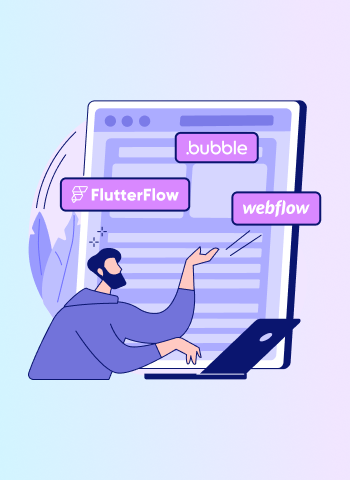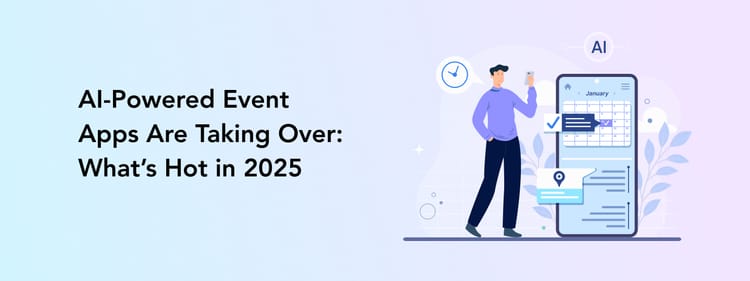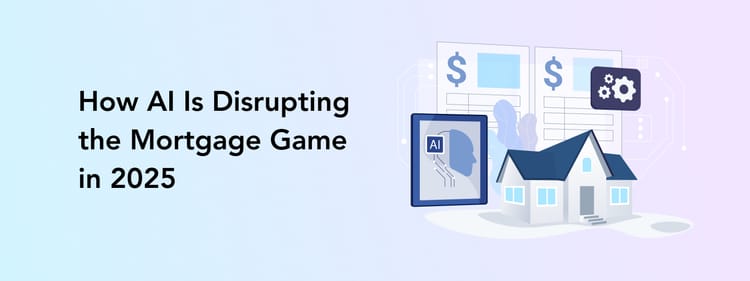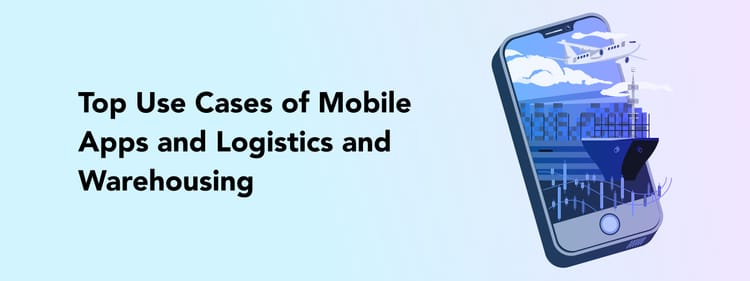Your users want fast answers and problem resolutions. The longer it takes them to get through an issue, the higher the chance they will simply abandon your app and go to a competitor. Introducing a chatbot in your mobile app is one effective way to speed up the average resolution time and offer a better user experience. These tools help answer popular questions, assist with navigating the app, redirect customers to the support team, and even give users comprehensive advice after analyzing their requests.
Let’s discuss what are chatbots in mobile apps, which benefits they bring to businesses, how to add one to your app, and of course, what should your budget be for implementing chatbot functionality in your product.
What Are Mobile App Chatbots?
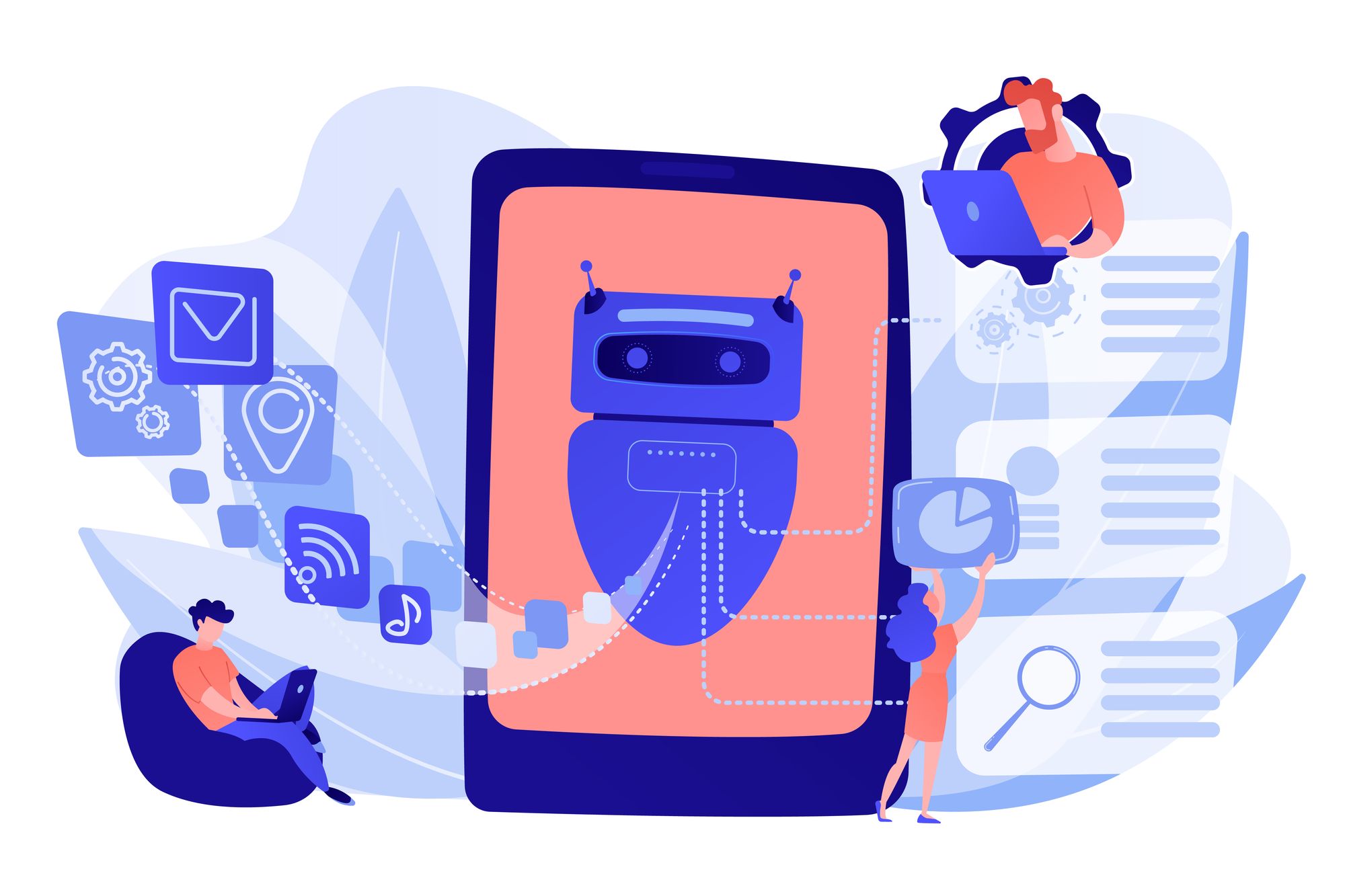
Chatbots are tools that can be integrated into both websites and mobile apps. These are conversational tools that act like a messaging app, where a user sends their question or issue and the bot provides an answer. There are two main types of chatbots:
- Rule-based chatbots follow specific patterns you set up when integrating a chatbot. This type of chatbot recognizes certain keywords in users’ questions and provides a template answer you created before. For example, if a user asks “Where can I check my order’s delivery status”, the chatbot recognizes the keywords “delivery status”, “check”, and “where” and sends a predetermined response.
- AI-based chatbots are more elaborate tools that can complex queries and adapt their responses. They feature artificial intelligence and natural language processing to provide more precise answers, teach themselves over time, and answer in a human-like, natural tone. AI-based chatbots are more complex to implement but the effort pays off as often enough users cannot tell if they are talking with a support team member or an AI.
Whichever option you decide to go with, mobile app chatbots can complete a whole set of tasks and definitely will enhance user experience.
Among the functions you can use chatbots for are
- Answering popular questions from the customers
- Placing orders, getting appointments, making payments, etc
- Reporting problems with an app or product
- Helping users navigate the app
- 24/7 technical support
- Collecting user feedback
- Giving product recommendations
- Onboarding new users
- Offering regular updates and news, e.g. stock market updates in a wealth management app
- Offering extra services and advice (e.g. a mental health app can offer psychological advice via a chatbot)
- Promoting your brand and separate services
All these functionalities bring a whole bunch of benefits that both users and businesses enjoy, like faster product resolution times and higher personalization levels. After all, a happy user means a flourishing business.
Top Benefits of Chatbots for Mobile Apps
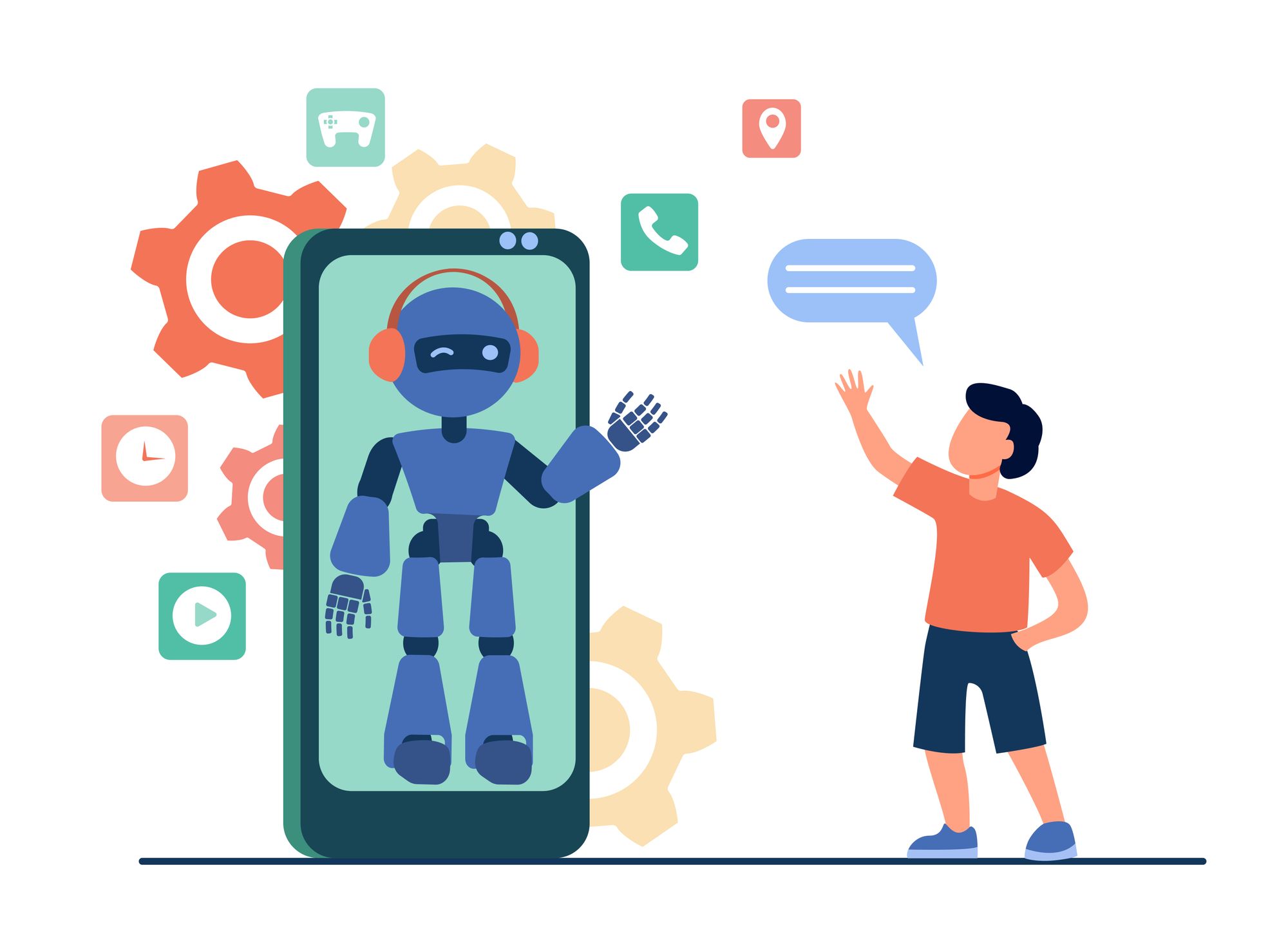
Let’s take a look at the top benefits a chatbot in a mobile app has to offer.
Better user experience
Incorporating chatbots in mobile apps can significantly enhance the user experience through personalization and streamlined onboarding processes. A recent survey only proves that users are happy to talk to a robot: 62% of respondents state that they like using chatbots.
By analyzing user data and preferences, chatbots can suggest users tailored recommendations, content, and services, making interactions with the app more relevant and engaging for each individual user. Moreover, during onboarding, chatbots can efficiently guide new users through the app's features and functionalities, reducing confusion and increasing user satisfaction.
Faster issue resolution
Chatbots offer a quick and efficient way to address user queries and resolve issues in real time. And chatbot users definitely like that: 69% of participants in a recent survey responded that instant answers are the reason they rely on chatbots.
With their ability to access vast databases and automated troubleshooting capabilities, chatbots can provide instant solutions to common problems without human intervention. This reduces response times and frees up the support team for more complex request resolution but also ensures that users receive prompt assistance no matter day and time, leading to higher levels of customer satisfaction and retention.
Consistent user support
Chatbots provide round-the-clock, 24/7 support, eliminating the limitations of human availability and time zones. Consider this: 64% of chatbot users say that 24/7 service is the most helpful chatbot functionality. Users can access assistance whenever they require it, whether it's during peak hours or late at night. Additionally, chatbots offer self-service options, enabling users to find answers to their questions independently, further reducing the burden on support teams.
Cost saving
Implementing chatbots can significantly reduce operational costs for businesses. Compared to maintaining a large customer support team, chatbots are a cost-effective solution for handling a high volume of user interactions. With a chatbot, you don’t need to hire more people just to work a few hours a day during peak times or leave customers waiting around for an answer. Once developed and deployed, chatbots require minimal maintenance, making them a cost-efficient option in the long run.
Increased sales
By employing personalized product recommendations, chatbots can guide users towards relevant products or services, increasing the likelihood of purchase. What’s more, chatbots can assist with the entire sales process, from answering product-related questions to facilitating the checkout, resulting in a seamless user experience that positively impacts sales figures.
How to Integrate a Chatbot into an Application
To implement a chatbot in your existing or in-the-build app, you can either get a chatbot built from scratch according to your custom requirements or can choose among various dedicated tools that allow adding an AI-based chatbot into an app easier.
Some of the most popular chatbot APIs and SDKs to choose from include
- Dialogflow is a natural language understanding platform offered by Google Cloud. It allows developers to build conversational interfaces, including chatbots and voice-powered applications. The API enables developers to send user input to Dialogflow's NLU (natural language understanding) models, which process the input and returns a structured response taking context and intent into account.
- IBM Watson Assistant is an AI-powered chatbot platform provided by IBM. Watson Assistant supports a wide range of languages and provides advanced features like context retention during conversations, entity recognition, and custom integrations. It also enables developers to train the chatbot with user-specific data for more personalized interactions.
- Microsoft Azure Bot Service is a cloud-based platform offered by Microsoft that enables developers to build, deploy, and manage intelligent chatbots and conversational agents. With Microsoft Azure Bot Service, developers can take advantage of built-in Natural Language Processing (NLP) capabilities, making it easier for chatbots to understand and respond to user inputs naturally. The service also offers pre-built templates and easy-to-use tools for quick prototyping and development.
- Wit.ai is a natural language processing platform recently acquired by Meta. It allows developers to build conversational applications, including chatbots, with its easy-to-use API. Developers can train Wit.ai models with labeled examples to enable the chatbot to understand user inputs accurately. The platform supports various languages and provides pre-built entities for common use cases, making it suitable for diverse applications.
While these dedicated tools make incorporating a chatbot simpler, there are still a number of steps you need to take.
Define chatbot interactions
First of all, you should plan the interactions users will have with the chatbot in your mobile app and clearly define the purpose of this feature. We listed some of the top chatbot functions above. It’s up to you whether a chatbot will perform only one type of request, offer several different interactions, or become an all-in-one tool for any customer inquiry.
If you are going with a rule-based chatbot, you have to determine the possible user inputs and the corresponding chatbot responses for each interaction. For an AI-based chatbot, a natural language processing setup and appropriate training data are a must.
Integrate chatbot tool
Your development team can integrate the chosen chatbot tool into your mobile app's codebase. This integration will enable the app to send user queries to the chatbot's backend, receive responses, and present them in the app's user interface. Another more customized but time-consuming and costly option is to build a chatbot from scratch.
Design the user interface
The next step for your development team is to design a user-friendly interface to display chatbot conversations within your mobile app. A UI/UX designer has to come up with a simple chat-like UI element and consider the app’s overall aesthetics while designing the chatbot UI.
Test and Optimize
Don’t forget to thoroughly test the integrated chatbot to identify and fix any issues, like long response times or inaccurate answers. With time, you can optimize the chatbot's responses based on user feedback and usage patterns to improve its performance and accuracy.
It might be quite a challenge to integrate a chatbot without a skilled development team for this task as integrating a chatbot into a mobile app involves working with the app’s source code as well as different APIs and SDKs. A professional team can ensure a seamless integration that aligns with your app's requirements and provides a positive user experience.
How Much Does It Cost to Add a Chatbot to a Mobile App
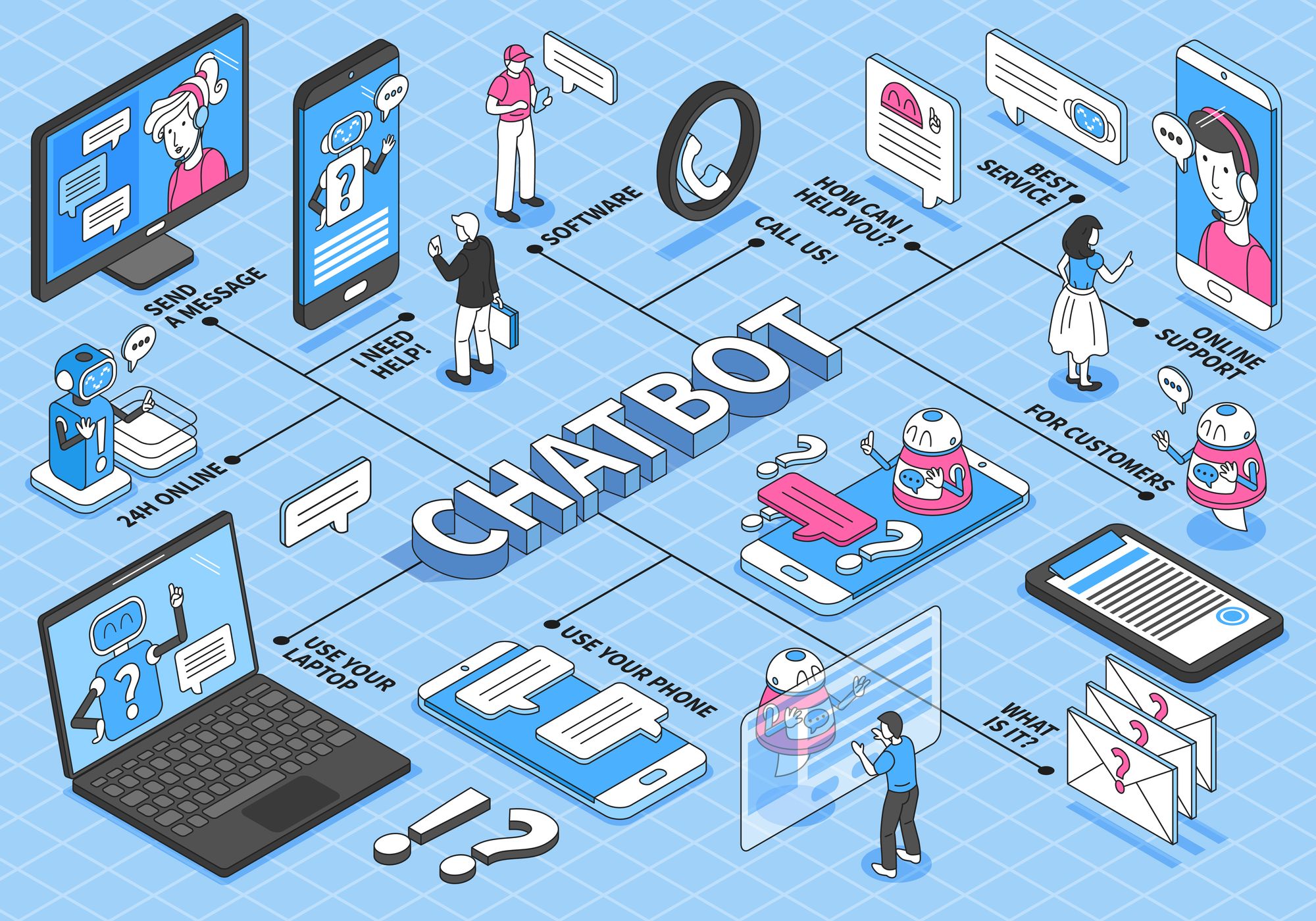
Integrating a chatbot into a mobile app involves several factors that contribute to the overall cost. The cost can vary based on which approach you use: integrating a ready-made chatbot tool and adjusting it to your needs and request type or building a custom chatbot forms scratch. Plus, the complexity of the chatbot's functionalities, the level of natural language processing (NLP) required, the cost of external APIs, and the platform used for development will also impact the price.
Usually, chatbot integration tools are subscription-based and the price depends on the monthly number of requests the bot processes. Some platforms, like Wit.ai, are completely free for commercial use.
Additionally, the extent of customization and the amount of backend infrastructure needed to support the chatbot can impact the overall expenses. Hiring a dedicated development team to design, develop, and test the chatbot is a critical factor influencing costs. While getting a custom-made chatbot from scratch is more expensive than working on API or SDK integration, you need to collaborate with developers either way as there is work with source code required.
A simple chatbot integration into an existing app with a dedicated API can cost up to $5000, with more custom design and complex functionality increasing the price.
Consider Perpetio Your Trusted Partner
When looking for a trusted partner to add a chatbot to your mobile app, consider Perpetio as your go-to development team. Specializing in mobile apps, we bring a wealth of expertise and experience to the table, ensuring seamless integration of chatbot solutions into your app. Whether it's building a chatbot from scratch or integrating with popular chatbot APIs and SDKs, Perpetio's team of skilled developers can cater to your specific business needs.


